|
Displaying items by tag: rugs
On Tuesday, October 28, the Francis Bacon MB Art Foundation was inaugurated by Prince Albert of Monaco. The opening of the private non-profit institute coincided with the 105th anniversary of the birth of the postwar British artist. Located in Monaco, the foundation brings together over 2,000 Bacon-related items, including artworks, photographs, works on paper, and working documents, as well as examples of the artist’s furniture and rug designs from his early career. Some of these objects have never been publicly displayed.
The Francis Bacon MB Art Foundation was established by the Lebanese-born Swiss property developer Majid Boustany to promote a deeper understanding of the work and life of Bacon worldwide.
A unique scholarly institute devoted to Francis Bacon is to open in Monaco, where the painter drew inspiration from the light and landscape, as well as the principality's gambling dens and bars.
The idea of the wealthy Lebanese-born property developer Majid Boustany, the Francis Bacon MB Art Foundation's collection will bring together previously unseen photographs, oil paintings from the 1920s to the 1980s, and furniture and rugs from Bacon's spell as an interior designer. There will also be an extensive library open to scholars and members of the public by appointment.
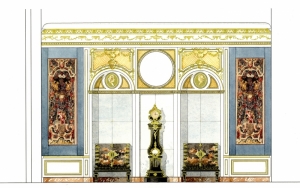
The Louvre announced that it will reopen its 18th-century decorative arts galleries on June 6 following an eight-year restoration and reinstallation. The Parisian museum’s sweeping collection of more than 2,000 decorative objects will be dispersed among 35 newly-renovated galleries in the north wing of the Louvre’s Cour Carrée. The galleries, which boast 23,000 square feet of exhibition space, were originally expected to reopen last year. Before this extensive restoration, the galleries had not been significantly updated since they were installed in 1966.
The Louvre’s collection of royal furniture, decorative bronzes, rugs, tapestries, gold and silver ware, porcelain, jewelry, and scientific instruments, will be grouped into three stylistic movements: the reign of Louis XIV and the Regency (1660-1725), Rococo (1725-1755), and the return of classicism and the reign of Louis XVI (1755-1790). The galleries also feature a number of period rooms including a drawing room from the nearby Hôtel de Villemaré, which was acquired by the Louvre in the 1800s but has never before been displayed in its entirety. Before being reconstructed in the museum, the room underwent a lengthy conservation.
Jannic Durand, director of the department of decorative arts at the Louvre, said in a statement, “We wanted to achieve a happy medium between period rooms and exhibition galleries. Each object benefits from being in relationship with other objects. In some cases, this means creating a period room so our visitors can understand how people lived with these objects or so they can appreciate holistically the elegance and refinement of the 18th century. In other instances, it means curating display cases devoted entirely to porcelain, silverware, and even some pieces of furniture to underscore the history of techniques and styles.”
The Louvre worked with the celebrated interior designer Jacques Garcia to create the new spaces for its collection of 18th-century decorative arts. The project was funded entirely by the patrons of the museum, including a $4 million donation from the American Friends of the Louvre.
The American Textile History Museum in Lowell, MA has received a major gift of $1 million from the late G. Gordon Osborne and his wife, Marjorie, who passed away last year. Gordon Osborne was a longtime supporter of the institution and played a pivotal role in establishing its research library. Prior to the $1 million bequest, which will go towards the museum’s endowment fund, the Osbornes had donated an additional $1.5 million to the institution.
The American Textile History Museum is an affiliate of the Smithsonian Institution and aims to tell America’s story through the art, history and science of textiles. The museum’s vast collection includes tools, spinning wheels, hand looms, early production machines, textile prints, fabric samples, hooked rugs, handwoven linens, costumes and textile-related decorative arts objects.
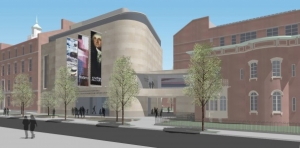
The 88-year-old Textile Museum will move from its historic DuPont Circle home to the George Washington University campus in Washington, D.C.’s Foggy Bottom neighborhood as part of a $33 million project. Construction on the new 35,000-square-foot museum is underway and expected to reach completion in spring 2014. The transfer of 19,000 works, some dating back thousands of years, is expected to take an additional six months. The Textile Museum’s new location is slated to open to the public in late fall 2014.
Founded by American forester, philanthropist and collector George Hewitt Myers, the museum’s mission is to expand public knowledge and appreciation of the artistic merits and cultural importance of the world’s textiles. The museum’s collection includes 15th century rugs from Egypt, Spanish carpets, early Islamic textiles, pre-Columbian Peruvian textiles, Anatolian rugs, and more.
The Textile Museum’s final exhibition, Out of Southeast Asia: Art that Sustains will be on view through October 13 and the museum’s historic buildings will remain open through the holiday season.
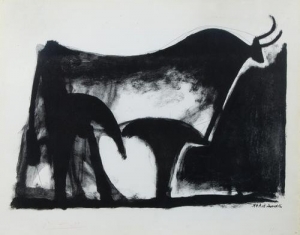
The art collection once belonging to the infamous Ponzi-schemer, Bernie Madoff, will be sold at Sotheby’s New York and Stair Galleries in Hudson, NY at the end of this year. The 61 works have an insured value in excess of $575,000. Securities Investor Protection Corporation trustee, Irving Picard, and the U.S. bankruptcy court are liquidating the assets, which include posters, rugs and fine art. Sotheby’s will be responsible for selling a large portion of the works and Stair Galleries will sell the remainder including posters, carpets and decorative items. The collection has been stored at Cirkers Fine Art Storage & Logistics in Manhattan since 2009.
While the majority of the lot is lackluster, there are a few important works including a lithograph by Pablo Picasso (1881-1973) illustrating a black bull, six bull lithographs by Roy Lichtenstein (1923-1997) and a small drawing of a woman’s head by Henri Matisse (1869-1954). There are also a number of works on paper by important postwar artists such as Jasper Johns (b. 1930), Andy Warhol (1928-1987), Frank Stella (b. 1936), Cy Twombly (1928-2011) and Ellsworth Kelly (b 1933). The sale will also include a pair of oriental rugs that once decorated Madoff’s offices in Manhattan and Queens.
Picard has been working to liquidate Madoff’s assets since the disgraced financier’s arrest in 2008. To date, he has collected about $9.3 billion to compensate the people and companies that Madoff defrauded. Picard has overseen the sales of three powerboats, various cars, jewelry, pianos and Madoff’s wine collection.
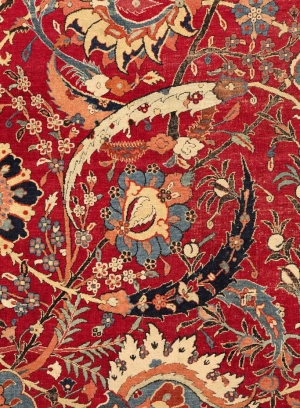
On June 5, 2013 at Sotheby’s New York the Corcoran Gallery of Art auctioned 25 rugs from its William A. Clark Collection. The rugs, which are from the 16th and 17th centuries, brought in $43.7 million, over four times the pre-sale high estimate of $9.6 million, making it the most successful carpet auction ever held. 100% of the lots sold and the auction achieved “White Glove” status, meaning every lot in the sale garnered more than it’s pre-sale high estimate.
The highlight of the auction was the Clark Sickle-Leaf Carpet. An important and iconic rug created by an unknown Persian artist during the first half of the 17th century, the rarely exhibited piece was expected to garner between $5 million and $7 million. The carpet ended up selling for $33.7 million, the highest price paid for any carpet at auction. Mary Jo Otsea, the senior consultant for rugs and carpets at Sotheby’s said, “Selling the Clark Sickle-Leaf Carpet for a record-breaking price of more than three times the previous auction record for a carpet has unquestionably been the highlight of my 30 year career. It is gratifying to see the strength of the market for carpets of this quality and rarity.”
The rugs were part of a bequest from William Clark (1839-1925), a Montana-based entrepreneur-turned-senator, to the Corcoran in 1925. The gift was comprised of 200 paintings and drawings and a number of other works, including the rugs. The Corcoran will use the proceeds from the sale to support future acquisitions that will better fit the institution’s focus on American and contemporary art. While the Corcoran has endured recent financial troubles, the money will not be used for operating expenses in keeping with its deaccession policy.
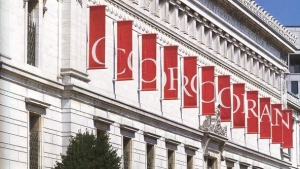
On June 5, 2013 the Corcoran Gallery of Art in Washington, D.C. will auction 25 rugs from its William A. Clark Collection at Sotheby’s New York. The rugs, which are from the 16th and 17th centuries, are estimated to bring as much as $9.6 million.
The rugs were part of a bequest from William Clark (1839-1925), a Montana-based billionaire entrepreneur-turned-senator, to the Corcoran in 1925. The gift was comprised of 200 paintings and drawings and a number of other works, including the rugs.
The Corcoran will use the proceeds from the sale to support future acquisitions that will better fit the institution’s focus on American and contemporary art. While the Corcoran has endured recent financial troubles, the money will not be used for operating expenses in keeping with its deaccession policy.
Highlights from the Corcoran sale include the Clark Sickle-Leaf Carpet, which is expected to garner between $5 million and $7 million. An unknown Persian artist created the rug during the first half of the 17th century possibly for the shah. The rarely exhibited Sickle-Leaf is one of the most iconic and important carpets to appear at auction. Another rug known as the Lafoes Carpet, which measures 44 feet long, is expected to bring between $800,000 and $1.2 million.
|
|
|
|
|